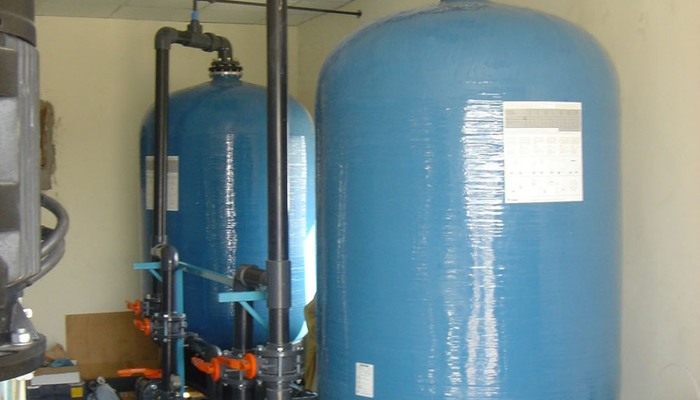Industrial Reverse Osmosis - 5 Parameters to Consider When Specifying Industrial Reverse Osmosis - 4 minutes read

In a power generation facility where the products are electricity and steam to provide the energy to produce that electricity, uninterrupted steam production is vital to the facility. It follows logically then that an uninterrupted source of boiler quality feed water is also vitally important. Frequently these days this means the installation and operation of a Reverse Osmosis (RO) system. The use of RO in power generation facilities has become increasingly common over the last 15 years, especially in newly built facilities. Reverse Osmosis retrofits to the boiler water pre-treatment systems of large, older power generation facilities are common as well, irrespective of the fuel source. This article presents 5 operational parameters for your consideration prior to purchasing a RO system for your Power Generation facility.
Industrial Reverse Osmosis Parameter #1: The Cost of Wastewater Treatment
Wastewater treatment or disposal costs are continually increasing. For those plants where the cost is becoming punitive, it might make more economic sense to design the wastewater RO system with additional stages to reduce wastewater to the minimum possible amount. In some "zero discharge" power generation facilities specialized Reverse Osmosis systems and other equipment such as crystallizers may be required. To provide an example of just how dramatically multi-staging can reduce wastewater volume consider that a 400 gpm, 400 micromho stream can be reduced to just 7.5 gpm with a 3-Stage system! The conductance of course increases dramatically along the way rising from 400 micromho to 21,320 micromho!
Industrial Reverse Osmosis Parameter #2: Choose Either Cellulose Acetate (CA) or Polyamide Composite (PA) RO Membranes Cellulose Acetate and Polyamide Composite membranes vary widely in the way their physical and chemical resistance. Fluid temperature, pH and chlorine resistance are just 3 examples of fluid characteristics that would make you favor one over the other. Operating pressure is another. CA membranes can operate at significantly higher pressures (greater than 450psi) vs. PA membranes (300psi maximum). Chlorine residual content, common in most municipal water system streams, can be tolerated just fine by CA membranes but must be neutralized by chemical means or be removed by activated carbon filtration if PA membranes are being used. A complete detailed comparison of CA and PA membrane types is contained within the white paper referenced below.
Anticipate the Maintenance Requirements of the RO System
Fouling of RO membranes will occur. Prevention is by far the best way of approaching this issue. Pre-treating the RO feed water for common foulants will reduce the maintenance burden and will ensure longer RO runs between cleaning or membrane replacement.
Industrial Reverse Osmosis Parameter #3: Prevent scaling of the RO membranes by hardness, strontium, or barium.
The three most common means of preventing scale build up in Power Generation RO systems are; feeding acid to control pH, installing a softener ahead of the RO system and feeding an antiscalant.
Industrial Reverse Osmosis Parameter #4: Prevent microbiological fouling of the membrane.
While generally not as damaging as mineral scale, microbiological fouling can significantly reduce the efficiency of a Reverse Osmosis system. Again, preventing fouling is a far more effective strategy than fouling remediation. Microbiological fouling of Reverse Osmosis systems is generally done by controlling the MB content in the RO feed water to a specified maximum using a biocide.
Industrial Reverse Osmosis Parameter #5: Prevent non-microbiological organic fouling of the RO membrane.
This is most successfully done by controlling the COD of the RO feed water. If the RO feed water is plant service water and uncontaminated (or does not contain recycled water or waste water) then the COD is almost always color or decaying vegetation. Both can be removed through proper upstream clarification or an anion exchanger. If the RO feed water contains a recycled or waste component, then the COD can be almost anything. In this case, proper upstream treatment using secondary (biological) treatment of the waste or recycled stream will be needed to reduce the COD to levels such that non-biological organic fouling of RO membranes does not occur.
An in-depth discussion of Reverse Osmosis design considerations for the Power Generation Industry including tables and drawings can be downloaded in the free 11 page Layne Christensen white paper titled "Eleven Things to Consider When Purchasing a Reverse Osmosis System for Your Power Generation Facility" (A $97 Value).
Get it here: Industrial Reverse Osmosis [http://www.laynewater.com/landing_ro_powerind_11things.html]
Go here to view a narrated slideshow on the subject of Industrial Reverse Osmosis Design.
As a leader in the development of Reverse Osmosis (RO) systems, Layne Christensen Company has the technical expertise to design and build reverse osmosis systems for all of your plant water needs. Beyond RO, Layne Christensen's Water Treatment Division Research & Development team focuses on refining and expanding the water treatment methods we currently employ so we can meet the most demanding challenges head-on with innovation.